Transgender Surgery and Health Care:
Q&A with Maurice Garcia, MD
CASEY SPEAKS WITH CEDARS-SINAI MEDICAL CENTER’S DIRECTOR OF TRANSGENDER SURGERY AND HEALTH PROGRAM
Dr. Maurice Garcia founded Cedars-Sinai Medical Center’s new Transgender Surgery and Health Program in 2017 and, currently, serves as its Director. It is only the second academic medical center in the West to offer gender affirming surgery and the host of other services that can go along with it, including hormone treatment, and plastic surgery.
I met Dr. Garcia at a conference earlier this year and was immediately impressed. When talking about transgender health with Dr. Garcia, it’s refreshing to experience the passion and desire he has in providing patients with the highest level of care and respect. I’ve come to learn that he is personable and spends time listening to his patients, answering any questions they have while recording a thorough assessment. He and his patients discuss options and put together a plan that works best for the patient. This may include a timeline or the ability to reserve a surgery date by the end of the visit. It allows the patient to get answers quickly, establishing trust and knowing that things are moving forward in their journey.
I hope you enjoy the conversation that follows and find the information beneficial!
 CASEY: How did you become involved with treating and supporting the transgender and non-binary community?
CASEY: How did you become involved with treating and supporting the transgender and non-binary community?
DR. GARCIA: Several years ago while a urologist resident from 2000-2006 at UCSF, I became aware of discriminatory treatment of transgendered patients from other surgeons and I wanted to create a different and better experience for these patients.
There was a taboo around transgender care and as I learned more about the medical and psychological benefits of treating medical conditions that can contribute to mental health issues, I was certain that the patients knew that being transgender was who they were; it struck me that it was wrong that we were not addressing their needs. We had nothing set in stone. There was no publicized protocol — and the lack of a protocol presented a significant barrier to appropriate treatment.
(NOTE: Dr. Garcia felt that he can contribute by righting many of the health disparities and the discrimination these patients were experiencing. He went on to say, “I knew it was important to offer treatments that would be unequivocally helpful to suffering patients.”)
CASEY: Can you share a few facts about yourself or your background? Hobbies?
DR. GARCIA: I am 48 year-old, heterosexual male, married with two children. I was born in Mexico but raised in the U.S. I speak English, Spanish, and Italian. My interest is the medical field of Andrology, which deals with male health, particularly relating to the problems of the male reproductive system and urological problems that are unique to men, and Sexual Medicine which can include erectile function, deformities of the penis and sexual function.
I received my formal training in transgender care in London and Brighton in the United Kingdom. I love research, and surgical device design. I have designed sexual aides that take into account the transgender anatomy. It’s important for me that my patients have good sexual function.
And, I also love to travel and cook.
CASEY: Was Cedars onboard right from the start, or did it take years to get them to help you create the program?
DR. GARCIA: As you know, I moved to Los Angeles and founded the Cedars-Sinai Medical Center’s new Transgender Surgery and Health Program in January of 2017. I started a similar program in San Francisco in 2014 at UCSF. Cedars actively recruited me so I already had tremendous support coming in the door. I want to do more and expand service options. I want to create a paradigm shift in Transgender Health Care across the board. I believe that by offering educational and research opportunities to medical residents and Fellows, we can train and get more doctors interested and available to see these patients. Cedars-Sinai is one of only two academic medical centers in the Western US to offer Gender Affirming Surgery.
CASEY: How do you see it advancing in the next 5 years?
DR. GARCIA: By the summer of 2019, I hope to have a Fellow teaching program for gender affirming surgery. I see our program growing and increasing its care in Los Angeles and offering program design and oversight for transgender care services to LA County. Cedars, as a leading national academic center, will leverage our expertise to guide the provision of services and enhance the quality of those services. Education must be the cornerstone of our services. Cedars is, and will be, a research focus center.
CASEY: Does Cedars and your program accept insurance?
DR. GARCIA: Yes. Insurance is accepted. Cedars does accept all commercial insurance and is “in-network” with most insurance companies. We accept Medicare. With Medi-Cal there are some caveats. A Medi-Cal patient must have an authorizing referral for Gender Affirming Surgery. Managed Medi-Cal will also be accepted but only for GAS. We are also in-network for Gold Coast in Ventura. We make ourselves available to any and all insurance plans and work with patients to help them qualify for all of the available benefits of their policies.
CASEY: What is the time frame for a first appointment?
DR. GARCIA: From the first time the patient calls to set up a first appointment to the time the patient sees the doctor is currently less than one month. We are working constantly to shorten the wait time.
CASEY: What takes place in the first appointment?
DR. GARCIA: At the very first appointment, the patient will meet with the doctor and talk about why the patient feels the need for hormone therapy. The doctor may discuss GAS and confirm the patient’s wish to transition. Hormones “dos and don’ts” are discussed in detail. Fertility and fertility preservation is addressed.
The patient should be prepared to ask questions about the side effects, different formulations of hormones, oral, patches and injections. We talk about benefits and the pros and cons of each. The patient should be prepared to ask questions about important risk factors. Issues like “do I have to quit smoking” are addressed. The patient should be prepared to ask questions about other care services that they might be interested in or need. The doctor will make referrals to other providers, when necessary.
We have an excellent Hormone Replacement Therapy physician at Cedars: Dr. Carl Violano. He does not require a mental health professional letter to begin HRT. His philosophy is that our providers have significant experience caring for transgender patients so the doctor can make that determination with the patient. If the patient has gender dysphoria, it will be obvious in the appointment. We do require a confirmation of informed consent but we do not have a requirement to sign a piece of paper.
If the patient is going to have GAS, we then submit the surgery request to the insurance plan authorizing coverage. GAS, right now, has a waiting list and we will always strive to keep it that way because it means we are actively serving the transgender community. With any good and successful practice there is a waiting list. We have great flexibility within our program. We have the ability to move people around or open up another surgery day. There is always a way to allow our patients who already had other surgeries to be seen as quickly as possible. Patients who have had surgery here will always have first priority if needing to be seen.
CASEY: Are we doing enough as a community?
DR. GARCIA: No. We could and must do more. There is still a lot of ignorance out there. There is now recognition in the medical and mental health community that transgender care is a medical necessity. The medical community must continue to work to educate both the healthcare community and our society at large. Many providers just don’t know and understand the issues so they are anxious relative to providing any care and are worried about litigation if they get it wrong.
Mental health care professionals have an important and integral role before, during and after GAS. We have to work hand in hand with mental health providers. Many time patients will see mental health providers before a patient meets with a physician but not always. Two-way communication is key. I appreciate every opportunity to speak with mental health care providers.
CASEY: Thank you so much for taking the time to help educate our community about Cedars-Sinai. Any closing comments?
DR. GARCIA: Yes. And thank you for the opportunity. We are proud that Cedars-Sinai is only the second academic transgender program in California. We are the largest provider of GAS with public or governmental insurance in the state. No other hospital with an academic program offers these types of life-saving surgeries via Medi-Cal coverage. We are committed to quality outcomes and providing continuity of care long-term. I learn from my patients when they come back for follow-up care. Our patients never have to wait for care for urgent issues. After having any kind of surgery with us, they are seen first.
We have an eye for the future and we design ourselves to be a natural leader.
CASEY: Thank you again for taking the time to help educate our community about Cedars-Sinai and thank you for what your do for our community.
DR. GARCIA: It is always my great pleasure to help this important and often overlooked community.
 Casey Weitzman is the President of Gender Wellness of Los Angeles and has been a licensed marriage and family therapist for almost 25 years, counseling children and adults who are exploring gender identity and/or sexual orientation issues. She is an active member of WPATH (World Professional Association of Transgender Health), CAMFT (California Association of Marriage and Family Therapists), and AAMFT (American Association of Marriage and Family Therapists).
Casey Weitzman is the President of Gender Wellness of Los Angeles and has been a licensed marriage and family therapist for almost 25 years, counseling children and adults who are exploring gender identity and/or sexual orientation issues. She is an active member of WPATH (World Professional Association of Transgender Health), CAMFT (California Association of Marriage and Family Therapists), and AAMFT (American Association of Marriage and Family Therapists).

